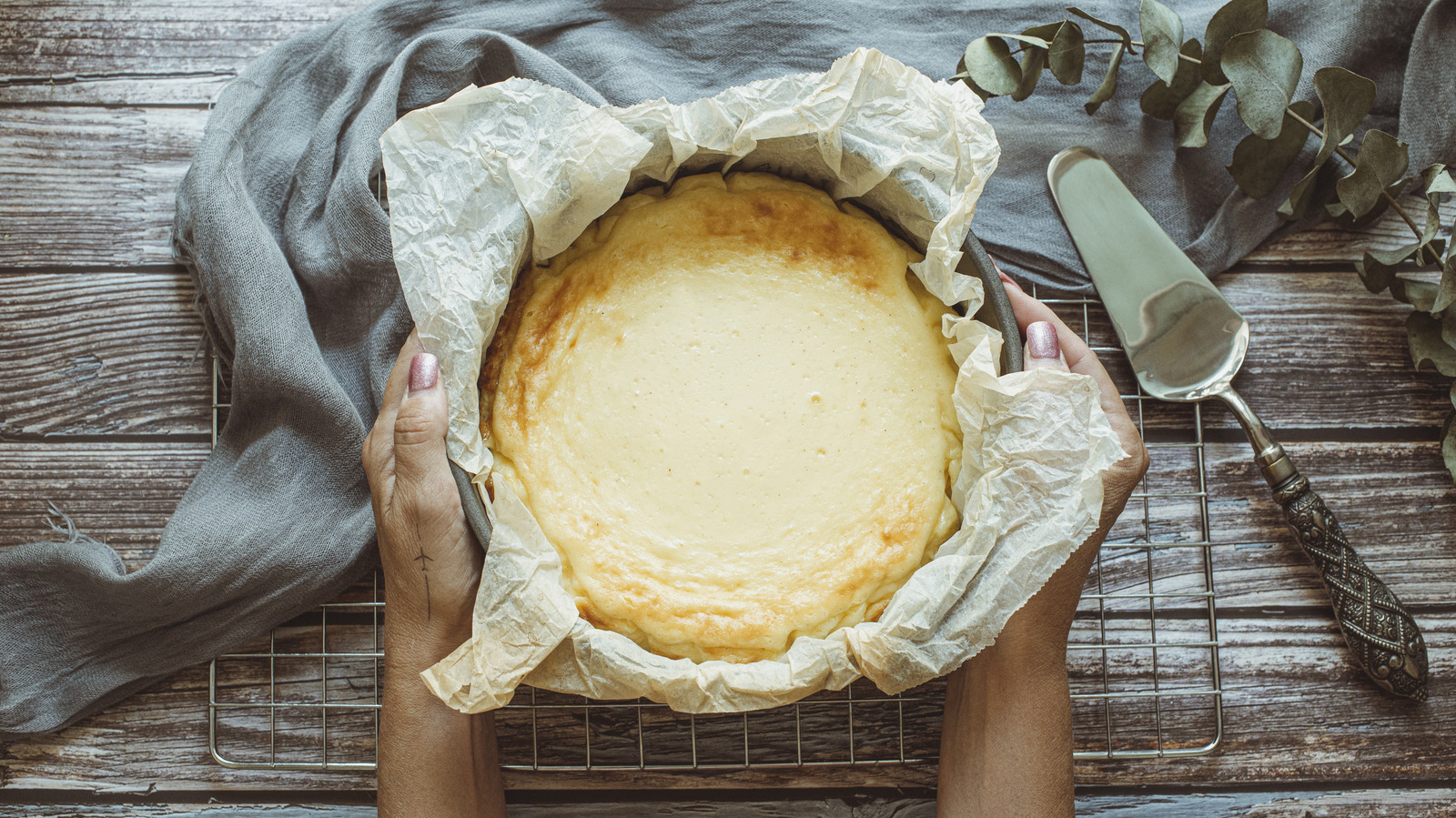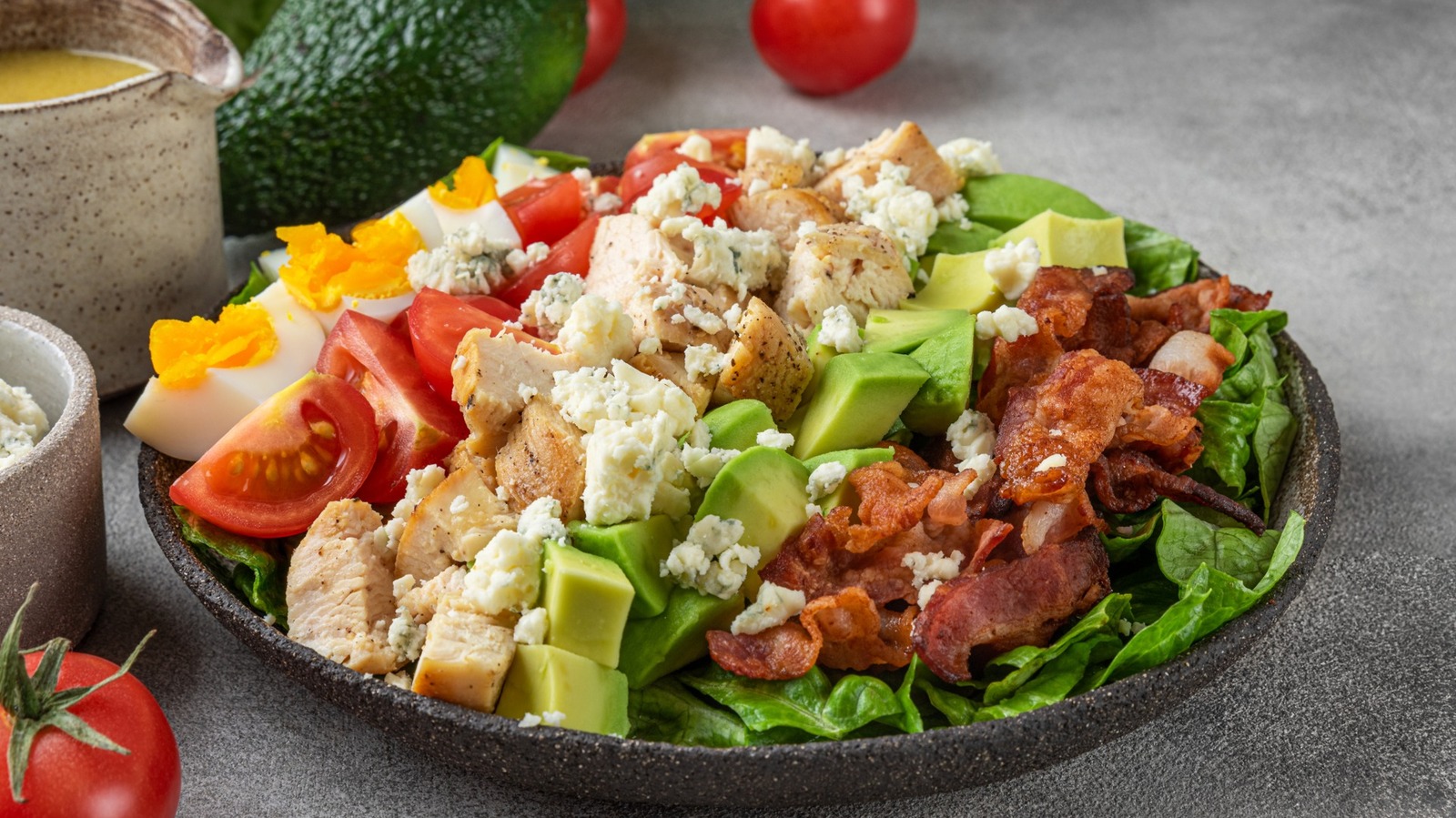
Cheesecake has a reputation for being tough to master, but we'd argue that this isn't entirely fair. What's more accurate is saying that it's tough to make an exceptional cheesecake. While blending sugar, eggs, and cream cheese and smashing up graham crackers is straightforward enough, making the perfect cheesecake is a delicate art that some bakers spend years perfecting.
Fortunately, you don't have to spend years. . With the aid of baking blogger and Tutti Dolce founder , culinary educator and author of "Making Artisan Cheesecake," , and , a baker who specializes in desserts through her brand Sweet Girl Treats MN, we've decoded the magic of a stellar cheesecake.
From selecting the right cream cheese to the perfect post-baking protocols, here's everything you shouldn't do if you want to whip up a cheesecake to compete with the pros. 1. Not using ingredients at room temperature "Cracked" and "lumpy" aren't exactly words anyone hopes to hear when they serve up a slice of cheesecake.
If you want to avoid anyone blaspheming your cheesecake in such a way, you'll need to make sure that your ingredients are at room temperature before you start baking. As per Jackie Thesing, that's the key to achieving the perfect consistency. "If any of the ingredients are too cold upon mixing them together, you will find that the cream cheese will form lumps and your cheesecake batter will not be smooth," she explains, recommending that you leave your cream cheese and eggs out on the counter for three to four hours before baking.
This tip is most relevant for , you should ideally apply the same logic to all of the ingredients in your cheesecake. , which is where your bake is most likely to go from subpar to a full-blown culinary disaster. Keeping everything at room temperature "allows the ingredients to incorporate much more smoothly and quickly," says Laura Kasavan.
"This prevents too much air in the batter, which can cause the cheesecake to rise quickly while baking and then collapse while cooling." 2. Under-mixing the cheesecake batter .
While it's possible to over-mix said batter — which, as Jackie Thesing explains, "could potentially add unwanted air into the mixture which will cause your cheesecake to crack" — your biggest worry should be under-mixing. Just like using ingredients that aren't room temperature, this can wreak havoc on the cream cheese's structure and texture. Luckily, Thesing has mastered the art of mixing to perfection.
As a rule, she starts by first beating her cream cheese and sugar. Once they're smooth, she adds in the other ingredients — scraping down the bowl with a rubber spatula after tossing each one into the mix — before ending with the eggs. "Mix with a blender or hand-mixer until everything appears to be incorporated, then scrape down the bowl and fold the batter a few times with a rubber spatula," she says.
"Mixing the cream cheese and sugar well, then scraping down the bowl between each ingredient addition are keys to ensure that your batter is not under-mixed and that every ingredient is well-incorporated." 3. Using reduced fat cream cheese You can't have cheesecake without the actual, well, cheese, but how do you know which one makes for the perfect cheesecake? All three experts we spoke to had one thing in common when choosing a cream cheese at the grocery store: avoiding anything low-fat.
Jackie Thesing also advises , a kind of soft cheese that contains less fat than cream cheese. This isn't due to pure pickiness. " ," Thesing explains.
That's because low-fat cream cheese pads itself out with much more moisture than regular cream cheese, meaning your cheesecake won't be quite as dense once cooked. Melanie Underwood has additional requirements for picking out the best cream cheese for your cheesecake. She prefers to use brands without gums or fillers.
"Cream cheese with gums can have a slightly pasty texture, which I find less appealing," she says. If you want to follow suit, be sure to scan the ingredients list on each packet before making your purchase. Common gums and fillers found in cream cheese — particularly low-fat cream cheese – include xanthan gum, guar gum, and carrageenan.
4. Crushing the graham crackers by hand Good cheesecake crusts don't happen by accident. While you want it to be thick enough to support and complement the cream cheese, you also don't want it to be so thick — or so crunchy — that it overpowers the entire cheesecake.
One of the most common pitfalls that leads to a disappointing crust is unevenly crushed graham cracker crumbs, which can make it hard for the base to bind together and leave it too rough. In fact, Laura Kasavan says that . "It's easiest to pulse them into uniform crumbs with a food processor," she explains.
Not only will this make your crumbs fine enough to form a smooth crust, but tossing your crackers into the food processor also save you the effort of crushing them yourself. A win-win situation. If you don't have a food processor, all hope isn't lost.
Other kitchen devices, like a blender or a stand-mixer, can achieve similar results. Even using something like a mortar and pestle will give your crumbs — and, as a result, your crust — a far more consistent result than crushing them by hand ever could. 5.
Adding too much butter to the crust Speaking of the crust, no cheesecake is complete without its buttery base. However, butter can also work against you if you use it in excess. .
As Laura Kasavan explains, "You want to add just enough fat to create a sandy texture and bring the crumbs together in large pieces when pressed together." Jackie Thesing has an even more practical reason for not combining too much butter with your graham crackers. "If your crust contains too much butter, you may also find that it sticks to the pan," she says.
The easiest way to avoid this? Following the crust part of your recipe to a tee — which, Jackie adds, will also ensure that it is the perfect thickness. The depth of the crust can play a role in how easily you can extract the cheesecake from the pan post-baking. "If the crust is too thin, you will have issues removing it.
" 6. Choosing the wrong kind of pan . Jackie Thesing says that you should "definitely" use a spring-form pan when baking your cheesecake.
That nifty metal latch on the side of the pan makes it easy to pop your cheesecake in and out. "If you use a regular baking tin, you will likely have issues removing your cheesecake from the pan," she says. Another thing to bear in mind when picking a pan is whether or not you're going to use a bain-marie (more on that in a bit).
If you do, Melanie Underwood has the opposite advice; she prefers to use a regular cake pan when doing a water bath because there's no chance of water accidentally seeping inside. If you do want to use a springform pan in tandem with a bain-marie, she has a tried and tested method for keeping things as dry as possible. "I would recommend using oven roasting bags," she says, "and then inserting the pan inside of the bag but then you have the bag come up the sides of the pan and that will prevent water from getting in your spring form.
" Alternatively, Underwood also recommends , which let you remove the bottom of the tin like springform by pushing from the bottom, not using a latch, meaning it's less likely to leak. 7. Not preparing the pan before forming the crust If you thought making a bad cheesecake was frustrating, imagine making a really good cheesecake, only for it to get stuck in the pan.
Frustrating though this may be, it happens to us all at some point. Most of the time, it's because you haven't done your due diligence pre-baking. Jackie Thesing stresses the importance of prepping the tin ahead of time, recommending that you " .
" Alternatively, you can always use butter — as long as you remember our previous tip and don't go too OTT. Laura Kasavan's go-to approach is to "use a silicone pastry brush to coat the bottom and sides evenly ." Emphasis on the "softened" — if you try this with butter straight from the fridge, you'll likely end up with an uneven spread.
Kasavan then recommends "[lining] the bottom of the pan with a round of parchment paper to prevent the crust from sticking." Sure, it's frustrating to add extra steps into your routine, but if the end result is a pristine cheesecake instead of one that's accidentally fractured in two, we're willing to spare the minutes. 8.
Forgetting to par-bake the crust Thought we were done talking about cheesecake crusts? Think again. A lot more actually goes into mastering the crust than you may expect. As per the pros, one of the things a lot of bakers forget is par-baking (aka partially baking) said crust before topping it with your cream cheese batter.
While this does admittedly make the baking process even longer, that can easily take your cheesecake to the next level. According to Laura Kasavan, "This step prevents the crust from becoming soggy later on," something she's put to the test with her own par-baking method. "It's very important to tightly pack the cheesecake crust in the pan," Kasavan explains.
9. Skipping the bain-marie A bain-marie (aka a water bath) can make a massive difference to the outcome of your cheesecake and is nowhere near as intimidating as it sounds. If you're new to the concept, it involves putting your cheesecake tin inside a larger pan of water while it's in the oven.
They're often used for desserts with a creamy texture, as the technique can help prevent cracking and overcooking. That's exactly why Melanie Underwood recommends using a bain-marie. "I love a water bath because I prefer a smooth and creamy cheesecake," she says.
" ." To follow her lead, fill a pan with about 1 inch of hot water once it's in the oven. If you do choose to use a springform pan, do so knowing that your chances of a leak are higher than a regular pan, so you'll want to use something like a roasting bag for extra protection.
After all, nobody wants a wet cheesecake. The importance of a bain-marie makes much more sense — and the extra effort is much easier to tolerate — once you understand how it works. As Jackie Thesing explains, "A water bath helps the cheesecake cook gently and evenly by keeping every part of the pan at an even temperature.
The water also provides humidity which helps the cheesecake properly bake and set without drying out in the oven (the eggs in the batter love a moist environment!)" The more you know. 10. Ignoring the wobble test The cheesecake challenges don't end once it goes in the oven.
While comes with its own recommended baking time, you should still keep a close eye on your cheesecake throughout the entire process. If the entire cake looks completely set, there's a high chance you've let it bake for too long. "It should still look slightly jiggly in the center — about the size of a quarter — when you take it out of the oven," says Melanie Underwood.
In other words, don't worry if your cheesecake looks slightly underdone. "The cheesecake will continue to cook and set as it cools," she adds. If you're extra cautious about the possibility of over-baking, Jackie Thesing recommends using "the wobble test" to know .
" ," she says. "To avoid over-baking your cheesecake, do the 'wobble test' up to 10 minutes prior to the recommended cooking time to ensure that it's not done earlier. Using the wobble test and baking in a water bath will help ensure that your cheesecake is cooked thoroughly and evenly!" 11.
Trying to cool the cheesecake too quickly Tempting though it may be to tuck into your freshly baked cheesecake when it's, you know, freshly baked, a good cheesecake needs time before it's show-ready. As Jackie Thesing warns, "One of the keys to taking a cheesecake out of the oven is to not do it right away." If you want to cool things down Underwood-style, "allow the cheesecake to cool in the turned-off oven for at least an hour, then gently remove the cheesecake from the water bath and set it on the counter.
Allow the cheesecake to come to room temperature, then place it in the fridge to cool to fridge temperature. Once the cheesecake has come to [the fridge's] temp, you can place it in the freezer (if desired) to freeze overnight and help remove it from the pan." Another method favored by Melanie Underwood is to "turn off the oven and crack the door slightly, allowing the cheesecake to cool gradually for about an hour.
" She then recommends the same routine of allowing it to come to room temperature — even if that takes several hours — before doing anything else. Basically, slow and steady wins the cheesecake race. "Rushing this process may cause condensation," Underwood warns.
12. Not setting the cheesecake in the fridge for long enough The final stretch of a good cheesecake is essentially just a game of patience. While the world won't end if you eat your cheesecake at room temperature, you will be missing out on a far superior version by not setting it in the refrigerator.
Just how long a cheesecake needs to stay in the refrigerator is up for debate. Melanie Underwood recommends at least four hours, Jackie Thesing recommends a minimum of six hours, and Laura Kasavan prefers to refrigerate her cheesecake in its pan overnight. " ," she says.
There are a few things to bear in mind before you whack your cheesecake in the refrigerator and call it a day. One of the most important is waiting until the cheesecake truly hits room temperature. If it's even slightly warm, condensation will form.
This is a one-way ticket to soggy cheesecake, unraveling all the hard work you've put in up until that point. For the same reason, Kasavan also recommends that the cheesecake is uncovered when it goes in the refrigerator. Recommended.














